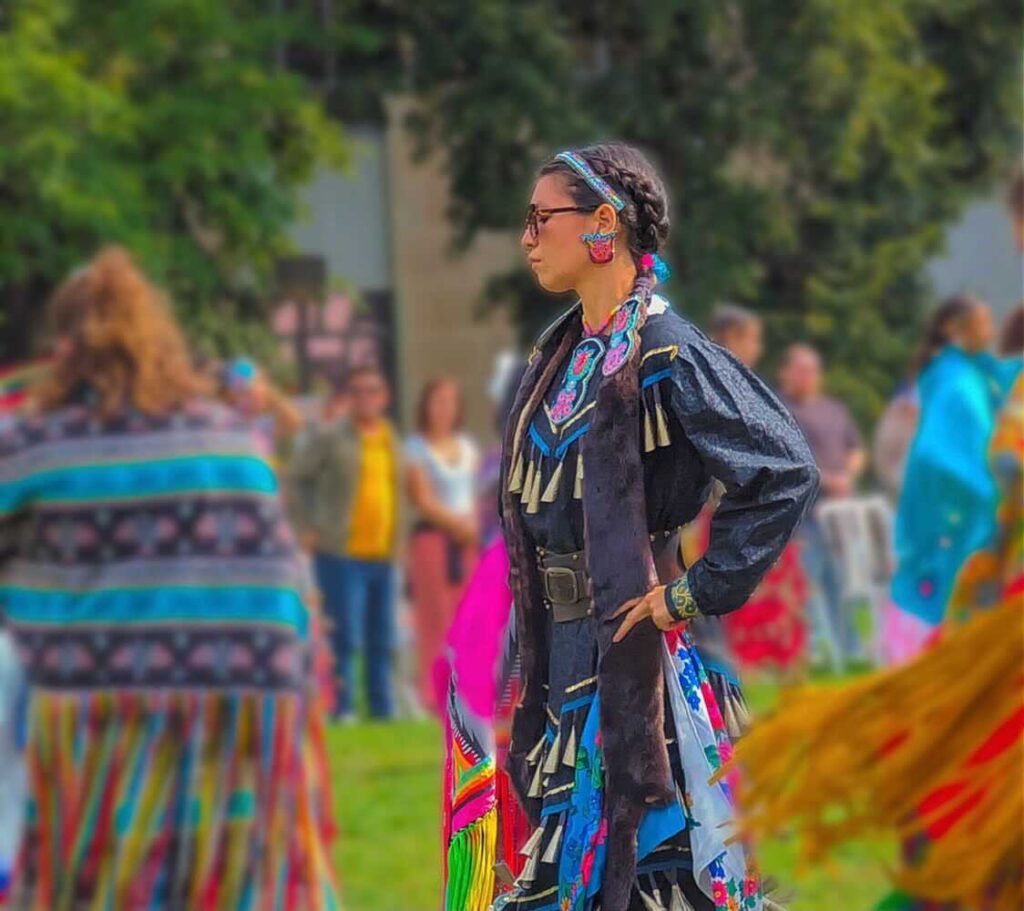
Working as the communications lead for the 2023 Toronto Metropolitan University student-led powwow, part of my responsibilities included organizing and speaking with the press. I was interviewed by journalists who came prepared. I also dealt with reporters who were clearly unprepared. For example, one reporter whose first question to me was, “What is a powwow?”
As a journalist, it is essential that you understand the best practices to follow when you are going into a community to cover an event. This is part of ensuring that you report in a manner that creates a relationship of mutual trust and respect between you as a journalist, the media company you are working for, and the community you are reporting on.
I know that it can be intimidating to report on a cultural event within a community that you may be unfamiliar with. But doing your research and asking the appropriate questions will help you feel more confident in your reporting. It will also keep you from looking like you are unprepared and inconsiderate.
Here’s some advice:
1. Understand what a powwow is: If you are coming into a First Nations’ community to write a story about a powwow, take the time to understand the history and significance of powwows. A powwow is many things. It is a celebratory and cultural gathering. It is also healing. But it can be done differently in Indigenous communities across Turtle Island. There are also different styles of traditional dancing, as well as singing. Certain styles are practiced by particular nations. If you don’t take the time to understand the different elements specific to the powwow you are covering, it will show in your reporting.
Before writing a story on a powwow, it is also crucial to understand that throughout the colonization of Turtle Island, the colonizers subjected Indigenous Peoples to violent assimilation tactics as a means to commit cultural genocide. Due to the colonial oppression that Indigenous Peoples lived under, there were times when these communities were forbidden to hold community events like powwows. They were not allowed to gather; they were not allowed to wear their traditional regalia; they were not allowed to sing their songs; they were not allowed to do their traditional dances.
Every powwow, every beat of the drum, is an act of decolonization – and every person singing and dancing at a powwow is participating in an act of healing and revitalization. It is crucial to be informed about this history before you enter into an Indigenous community.
2.Ask in advance: Some community events are closed to outsiders. Reach out to the event organizers beforehand and ask to enter the event as a journalist and make sure it is okay for you to take pictures and videos and do interviews. This will display that you are entering the space and the community with respect and consideration.
The media has perpetuated harm towards Indigenous Peoples by enforcing stereotypes, stealing stories and misrepresenting Indigenous voices. Approach your role in these communities with the intention of establishing a relationship built on mutual trust and respect. This relationship begins before you enter the community and continues while you are there and after you leave.
3.Listen to the arena director: As a journalist, the arena director is your best friend. They will tell you almost everything you need to know. When you can take pictures and when to stand or when to listen to the opening prayers. They will go over powwow etiquette. The arena director also announces the style, age and genre category of each dance, the head dancers and other contributors to the powwow.
Listening to the arena director will only benefit you because, trust me, there is a lot going on at a powwow.
4.Pictures: Sometimes it can be hard knowing when it is an appropriate time to take pictures. But as noted previously, the arena director will often tell you when it is okay for you to snap a few shots.
But there are some rules you should always follow. Don’t take pictures of dancers in regalia when they are just walking around, especially without their permission. (And do not touch the dancers’ regalia.) If you do take pictures of dancers when they are performing and plan on publishing them, be sure to ask for their names and get their permission. Also, do not take pictures of children. If you want to do this, ask their parents/caretaker and then the child(ren) for permission before taking any photos or video.
5.Protocols: In some Indigenous cultures and communities, it is a sign of appreciation to offer someone a token or gift for sharing insight, teachings or knowledge. As a non-Indigenous visitor, you can always ask before going into a community if this is customary, particularly if you are speaking to Elders or knowledge keepers. This shows that you know you are not entitled to information and you are acknowledging the value of receiving cultural or personal information or knowledge.
6.Identifying sources: There are many different Indigenous Nations across Turtle Island. These Nations have different clans and roles. Put simply, there are different elements to Indigenous identities and you need to clarify how someone might want to be identified in the story or caption. This ensures that you do not make any assumptions surrounding someone’s identity and avoids “umbrella terming” people that come from different Indigenous backgrounds, something that can perpetuate harmful stereotypes and lead to misrepresentation. Do not be afraid to ask someone how they identify themselves: it shows respect and consideration.
7.Enjoy yourself: Check out the vendors. Enjoy some food. Get a powwow taco – they are a tradition – and they are delicious.
